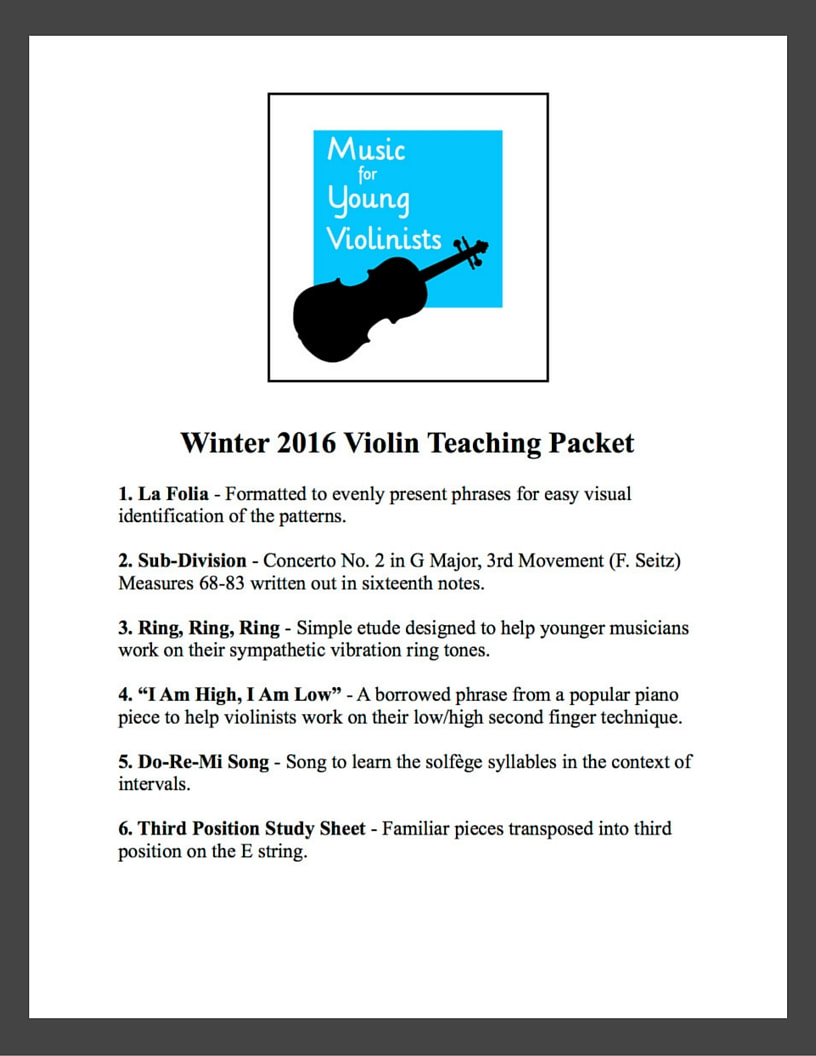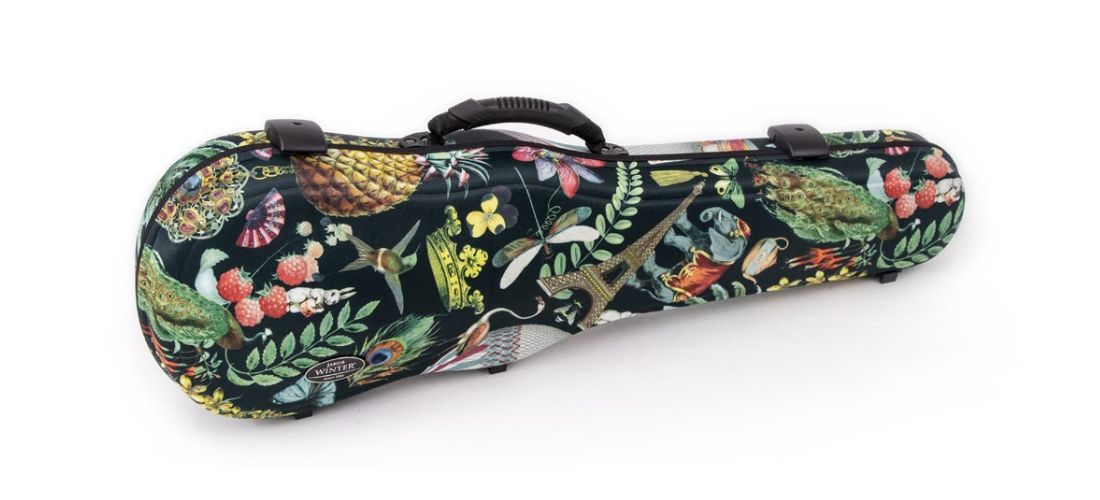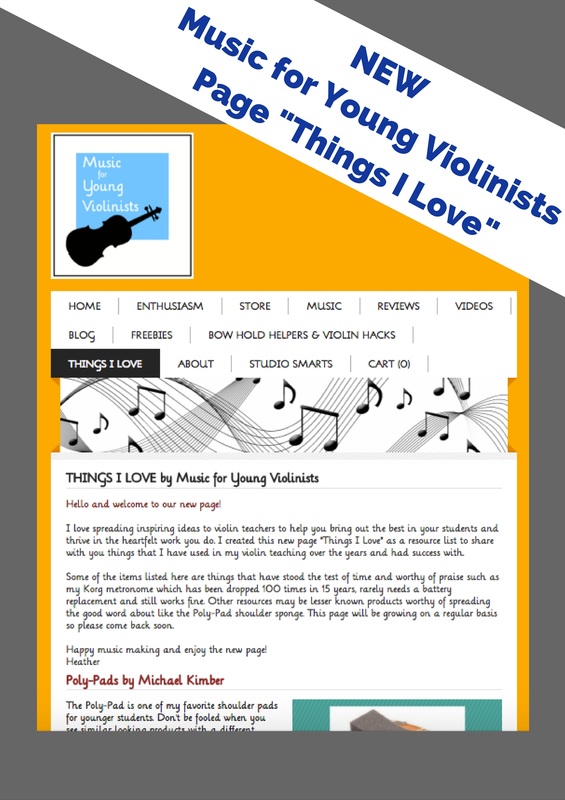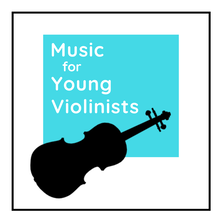|
Thank you to Robbie from www.GreatViolinCases.com for sharing his expertise on this guest blog post! Learn more about these cases by clicking on the links below. Thanks to technology, violin cases have been getting more and more advanced over the past few years. That means they're becoming more protective, durable, lightweight, and temperature-resistant. And the great thing is, you don't have to break the bank to get a decent case! Many reputable brands are on a mission to make protective cases more affordable for students. Below is a list of the top 5 violin cases for students based on their unique features. 1 - Best Value:Gewa Pure Violin Cases - starting at $220. These German cases are as protective as many $600 cases out there! They're made of polycarbonate, which is also used to make shatterproof glass. Plus, the case is more scratch-resistant than many hardshell violin cases. This is a great case for students that plan on playing the violin for at least 4 years. The neck cushion is adjustable so that it can fit ¾ and 4/4 violins. It's an affordable option for parents since you don't need to buy a new case when your child switches from a ¾ size to full-size violin. 2 - Best For Multi-Talented Students:Jakob Winter Violin Cases - starting at $182. Are you a student involved with lots of activities, and your violin goes along with you for all of these? Then you need a backpack case that is light and easy to transport. The Jakob Winter violin cases weigh as little as 2.8 lbs. That's as light as it gets! And they all come with 2 backpack straps, so you have the choice of wearing it like a backpack or over one shoulder (while you carry your school backpack). 3 - Best For Showing Up To Every Lesson Organized:Bobelock 1061 Fiberglass Violin Cases - starting at $260. Are you a student that needs a case that can help you keep all your materials (music, shoulder pad, tuner, accessories) in one place? Or else you'd forget them? Then check out the Bobelock 1061 fiberglass violin cases. These cases have all the features you need to stay organized. They come with covers that have zippered sheet music compartments. There's a velcro strap under the neck of the violin for your shoulder rest. And the spacious accessories pouch is movable! So you can keep all your cleaning supplies, rosin, and accessories in one place and take it with you to your stand. 4 - Best For Your Personalized Style (And Why This Matters):Tonareli Violin Cases - starting at $229. According to developmental psychologist Eric Erickson, students aged 12-18 need to establish a sense of identity before successfully moving into adulthood. This is also the age most students quit. Having a case that reflects their developing sense of self can help anchor their identity as a musician and support them in playing the violin. The Tonareli violin cases have the most colors and styles of any brand! They're also the ones who pioneered the cute "cello-shaped" violin cases. Plus, you can easily put on any stickers you like to these cases' smooth fiberglass surface. 5 - Best For Electric Violins:Gewa Bio Violin Cases - starting at $144. Electric violins have been growing in popularity in recent years, especially among students. That's because they're great with technology! Nowadays, any kid with an iPhone can plug in his electric violin, make music on Garageband, share it on Instagram immediately with all his friends and followers, and probably make a music video at the same time… all on his iPhone. Electric violins give students a way of "plugging" their instruments into the digital world. And they need a good case to make sure their electric violin is well protected. The Gewa Bio case is a great case for electric violins because the interior is wide. Allowing it to accommodate electric violins of various widths and designs. + BONUS - The Most Durable Cases:Bam Hightech Violin Cases - starting at $568.
Have you already invested in an expensive instrument and need a case to keep it safe? The Bam Hightech is the most durable case and will protect your asset for a lifetime. Some students have already purchased their life long instruments and are ready to invest in a case worthy of their beloved instruments. The Bam Hightech cases are incredibly durable. They're stronger than carbon fiber cases, but they do not absorb heat like carbon fiber cases do. They're definitely not the cheapest cases. But if you're serious about protecting your violin, you'll want a Bam Hightech case.
0 Comments
Last month Music for Young Violinists hosted a giveaway contest, and to enter, participants had to share what their favorite shoulder pad is. Here is a list of the favorite shoulder pad submissions from participating violin teachers beginning with the most popular. This is an informal survey, but I think it's neat to post since there were so many products that I had never heard of and may be of interest to you and your students. Click on the product below to be directed to their website to learn more about the specifics of these different shoulder pads. Most Popular Shoulder Pads from M4YV Teachers:
Shoulder Pads with 1 Vote Each: I love spreading inspiring ideas to violin teachers that help you bring out the best in your students and thrive in the heartfelt work you do. I created a new page here on the Music for Young Violinists project called "Things I Love" as a resource list to share with you things that I have used in my violin teaching over the years and had success with. Some of the items listed here are things that have stood the test of time and worthy of praise such as my Korg metronome which has been dropped 100 times in 15 years, rarely needs a battery replacement and still works fine. Other resources may be lesser known products worthy of spreading the good word about like the Poly-Pad shoulder sponge. This page will be growing on a regular basis so please check back soon. Featured on “Things I Love” is Helping Parents Practice (Ideas for Making it Easier) Volume 1 by Edmund Sprunger. This is HANDS DOWN my favorite resource to use in supporting parents practicing with their children. I appreciate this book so much that I have practically underlined every sentence in my copy because it is so clarifying and poignant. Sprunger combines decades of experience teaching Suzuki violin with his formal training in psychology to offer wise and compassionate perspectives that will elevate a parents understanding of why their child is responding or behaving in a certain way. He also offers solutions that are effective and healthy for addressing these specific situations. The book is divided into sections by practice topic and then further broken down into 2-5 page solutions for specific scenarios that a parent would encounter while helping their child practice. This concise organization was done with the busy teacher/parent in mind and makes it an especially convenient tool because you can look up your immediate situation without having to read an entire book. Thank you Ed and please let us know when Volume 2 is available. Learn more about Ed Sprunger and his resources HERE. To celebrate this new page we are giving away Ed Sprunger’s new book: Building Violin Skills: A Set of Plans Designed to Help Parents and Children Construct Positive Practices. To enter, just list one “Thing You Love” for your teaching and music making in the comments below. Winner will be chosen at random at the end of the month.
Tell a friend, email the studio, post to Facebook/Pinterest or if you are like me, send a good old fashioned letter in the mail: the Spring/Summer 2016 Music for Young Violinists music packet is still available for FREE. Just fill out a contact form either on the HOME PAGE or on the FREEBIES page and bam - you will receive a link that allows you to download this packet of music teaching awesomeness.
Wow - that's pretty awesome right! I will only offer these music packets as free seasonal downloads for 3 more seasons so don't delay in spreading the good news. All good things in life must come to an end and when I begin nursing school I will have to end this neat global music sharing project. Thanks! Heather
Hello M4YV Peeps,
It is my week off for Spring Break and has been an absolute constant rainstorm here in Oregon. This means I have time off & time inside to have too much fun with my MacBook photobooth feature and I have gone nuts restocking the FREEBIES page. Head on over to the FREEBIES page & enjoy some awesome new downloads to help you bring out the best in your teaching. I rotate my FREEBIES on a regular basis so many of these resources will not be up for long. Happy music making! Heather The THIRD POSITION STUDY SHEET is part of the free Winter 2016 music packet available only from Music for Young Violinists. This worksheet has been such an empowering resource for my students who are just beginning third position and they often progress thru these short studies much faster than we expect. Although I could assign each of these passages by ear, I find that it creates more clarity and organization to have the expected assignment clearly notated on a piece of paper. I designed this worksheet to combine multiple learning channels into one experience: EARS - Using review pieces to learn third position serves as guard rails to keep a student on track. They already know what the tune should sound like so there is clarity from the start. EYES - I remember when I first started reading on the G string and high on the E string how difficult it was to discern with all the additional staff lines. If a student and teacher prefer, this worksheet allows for writing in fingerings and half/whole step markings. Eventually the consistency of playing in the same range will help your young musician develop fluency for playing in this new higher range. HANDS - I kept all of the studies in the same range on the E string to give students enough repetition of the new skill set to truly grow confident in this new skill. If a student only practices third position in a single piece they will likely struggle for a while due to not receiving enough support to master this new and fun skill. How do you help your students with third position? Please share in the comments below.
Woo-Hoo, another prize!!! There is a special $15 Gift Certificate Prize to the Music for Young Violinists STORE for the first person who can help me identify the piano composition this excerpt comes from.
I used to hear it being practiced next door decades ago when I was in music school but I never knew the composer. I only know it is *fantastically fun for teaching young violinists how to master their low and high 2nd fingers. Nothing replaces good old fashioned 2 octave G Major scales but in my experience most students need a little more support in their curriculum. The worksheet pictured below is a part of the Winer 2016 Music packet which is one of the many free perks of being on the Music for Young Violinists newsletter list. I give away an entire packet of music to my list every season. I love hearing from you and even if you can not tell me who composed this piano piece please let me know your feedback about the Winter 2016 Music Packet:
*If you are like me you may have wondered if this is a real word. I thought I was just making this up but learned something new today and according the Merriam-Webster this word actually exists. The definition of fantastically is 1 : in a fantastic manner. 2 : to a fantastic degree : extremely Ha! That was exactly the word I was looking for to describe this small etude I use to help students with their 2nd fingers. This packet is not longer available but the worksheets from this can all be found in the Teacher's Toolkit available here at the Music for Young Violinists store.  La Folia - I noticed my students struggling to memorize the straightforward opening of this piece and could not figure out why until I looked at the score they were using (Suzuki Violin Book 6.) This version has the 4 bar phrases broken up unevenly on the lines, and my students were unable to identify how simple the pattern is. After my students used this re-formatted version, the phrases became visually apparent, and memory was much easier.
Sub-Division - Concerto No. 2 in G Major, 3rd Movement (F. Seitz) m. 68-83 By the time a musician is at this level sub-division should already be an acquired skill and having it printed out for explanation is not necessary. However, I find that having an assignment blocked out on a separate worksheet creates clarity of goals between teacher and student as well as preventing a student from plunging into the score without having the proper foundation to interpret the music accurately. Ring, Ring, Ring - This is a simple etude that is easy to learn and designed to help younger musicians work on their sympathetic vibration ring tones. It can also be done starting on the D string. “I Am High, I Am Low” - When a young musician begins differentiating between what we refer to as low and high 2nd fingers, they need a great deal of support. I borrow this musical phrase from a favorite piano piece and have students learn it in the five-part sequence listed on the worksheet. They enjoy it and have fun getting some speed in it. Do-Re-Mi Song - Solfège is not something that most American musicians learn when they are young, but I would like to see this change. This simple and fun piece focuses on the intervals of the scale while teaching the seven syllables of solfège used in English. I first introduce this by singing and using hand symbols and fun body movements to match the lyrics. After it is learned vocally, a violin student can easily transfer this onto the violin. Third Position Study Sheet - I love teaching the III position by ear but found that some students need a correlating visual to help it make more sense and not get discouraged in their home practice. This worksheet takes several familiar pieces and transposes them to be played in the III position on the E string to help concentrate on a specific range. It is a fun assignment and students enjoy experiencing their growth by mastering these phrases in the III position. Did you know that my book Twinkle: Duets, Trios & Quartets was written to help students gain fluency and confidence with their III position? I created this collection of chamber music pieces before the Suzuki books were revised to fill the gap that used to exist with the use of the III position. You can view samples from this collection on the website and download a free Twinkle Duet when you sign-up for the newsletter.
The "chinrest" is really a "jawrest."
This terminology can confuse young violinists and their parents in the beginning. It is useful to point out this discrepancy so that the violin posture is not inadvertently misinterpreted during home practice.
For a young violinist having difficulty integrating the words "down" and "up" into their playing consider substituting with the words "open" for down bows and "close" for up bows. Since the bow moves in lateral directions left and right the actual words "up" and "down" do not correlate with the motions and can be confusing to a young violinist and their parents during home practice.
Words like "high" & "low" are confusing to beginning violin students while still learning how to play the instrument because these words are associated literally and do not yet connect with pitch vibrations.
Consider altering your instruction to be a description location like "closer to the bridge (or nose)" and "closer to the scroll" instead for more efficient results in the initial stages of learning these distinctions. A "hack" is defined in the urban dictionary as: A clever solution to a tricky problem. As violin teachers (or parents of young violinists) our technique development can all be categorized as tricky problems so here are a few photos of "hacks" I have used in my studio to offer solutions for my students. For more, please visit the Violin Hacks & Bow Hold Helpers page. In a world full of violinists, with a staggering amount of talent, violinist Searmi Park stands out. Searmi (pronounced Say-ah-me) is the new concertmistress for the Eugene Symphony (Eugene, Oregon, USA) and was recently a featured soloist performing the Barber Violin Concerto in November 2014. Her incredible precision, focus and distinct style of expression leave a mark on all who get to experience her. She is a captivating artist and performer and the buzz of the town. I was fortunate to have the opportunity to do a short interview with Searmi to glean some insights for myself and my violin teaching studio and here is what I learned. How Did You Learn to Express Yourself? Searmi illustrated her philosophy with how she prepared for her recent performance of the Barber violin concerto. Although the opening of this concerto is one of the easiest technical parts of the piece to play, it was also one of the sections that she practiced the most in order to capture the desired expression she visioned. As explained in the book *The Little Book of Talent by Daniel Coyle, every skill falls into one of two categories: hard skills or soft skills. This is significant because hard and soft skills require different training and operate in different parts of the brain. In short, for violinists, hard skills are technique and soft skills are things such as performing and expression. As teachers, this is an important distinction for us to be aware of and balance in our studios. When we teach the violin, we may neglect emphasizing training the soft skills of expression and performing because our instrument requires so much hard skill technique. The success of Searmi’s approach to practicing expressing herself and to practice performing reminded me of the need to include this in my teaching curriculum so that I can best help my students. *The Little Book of Talent by Daniel Coyle is an accompanying book to The Talent Code also by Daniel Coyle. The Little Book of Talent breaks down the ideas of The Talent Code into 52 concise explanations and applications. Regarding “Talent” Any of you who have read the book Outliers by Malcolm Gladwell or the above mentioned The Talent Code are aware of the 10,000 hours research. This research concludes that mastery of any skill needs at least 10,000 hours of practice to ingrain and synthesize patterns into the muscles and mind. Many professionals, like Searmi, estimate their actual practice time significantly higher than 10,000 hours.
Public Speaking Teaches Performing “The violin is your voice” Searmi feels that it is important for a musician to be able to speak well in public. Through the process of learning to speak in public a person gains skill for performing on their musical instrument and builds their confidence. She said that if she had a teaching studio, she would incorporate the component of public speaking as a part of the curriculum for her violin students to better learn how to present themselves in public. On being a Yogi and Athlete: In addition to pursing music, Searmi has deeply dedicated herself in other disciplines. Encouraged by her college violin teacher and mentor, Mark Kaplan, Searmi started practicing yoga in her early 20’s and has since completed yoga teacher training. She loves the mind-body awareness that it gives her. Yoga literally means “yoking together” the mind and body. As violinists, the body is our first instrument and establishing a relationship of awareness with the body is a way to optimize the way we play our violins and keep ourselves healthy. My first violin teacher always emphasized how special yoga was and famous violinist Yehudi Menuhin has also been a strong advocate for complementing violin playing with a yoga practice. Searmi has also run a few marathons to date and is currently training for an ultramarathon in 2016. When asked about how yoga and running tie into her violin playing she remarked that she likes to take something as far as it can go with everything she commits to. These activities provide balance in her life and running and yoga are like practicing violin she says - “a mental game.” She shared how when working on the Barber Violin Concerto, she began at quarter note = 90 and metronome crawled her way to 192. This is the same way an athlete would train and the same way a beginner learns a new piece of music. It is a fundament to the work we do as educators and musicians and even those at the concert artist level. Advice for younger musicians: “You can learn to say anything with your playing at any level, but the harder you work the more you can express yourself.” I loved that Searmi kept coming back to the same message of emphasizing the importance of hard work and that it is thru one’s personal effort that we achieve our results. We know thru recent developmental psychology how important it is to praise the effort (i.e. the hard work) and not the result since this gives children a mindset for success that they can carry with them their whole lives on all things that they pursue. Searmi also emphasized that “violin playing is hard but it is so rewarding” which I believe is also an important message for our children. Many things in life are of value for the meaning and self awareness they bring to us and I believe that playing music falls into this category. Parenting: Searmi does not classify herself as a strict parent but teaches her children that they can do whatever they want with their lives and emphasized that children learn by example. Her consistent modeling of discipline in preparing for performances and maintaining her health and well being thru her yoga practice and long distance running set a clear example for her children of what is possible to do with one’s life. She also consistently came back to the same message in this interview that there is no secret to talent but that achievements are the result of hard work. Summary: Searmi walks her talk and has a relationship with her life that holds the boundaries of human potential as exciting, possible and rewarding. She has used her discipline and years of hard work to achieve her dreams and an incredible level of greatness in multiple realms. We wish her continued success in all areas of her life and are grateful for her insights here and the gifts she brings to this world. Answer: You don't because knowing the taste of honey is experiential.
How do you describe the Itzhak Perlman performance last evening with the Eugene Symphony at the Hult Center for the Performing Arts? The analogy of how we describe the taste of honey also suits what it is like hearing a legendary performing artist. We can try to describe what we saw and felt but it does not fully capture the experience. It is difficult to capture in words what being at an Itzhak Perlman performance is like. How do we explain our marvel at the mark of high human achievement we saw before us? Our awe at a performer with fingers more nimble than we would believe to be possible? A performer whose career has been touching people around the globe for over 50 years? I ran into one of my students after the performance and asked her what she thought of the performance. I realized immediately that was not the appropriate question because when you hear Perlman perform it is not something you think about but something you feel. The feelings generated by a performer like Perlman pull you into the undertow of the mystery of life and a place where humanity connects within us. This connection is why we find live performances so valuable and necessary in our lives. http://www.itzhakperlman.com/
|
Categories
All
Archives
February 2024
AuthorHi! It's me, Heather. I absolutely love working on the Music for Young Violinists project and all the many facets: blogging, website, music, teaching materials, freebies, videos, newsletter and giveaway contests. The best part is connecting with you so feel free to drop me a line. You can learn more about me on the "ABOUT" page. Thanks! |
























 RSS Feed
RSS Feed
